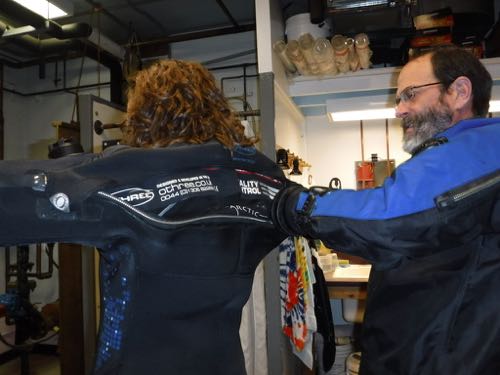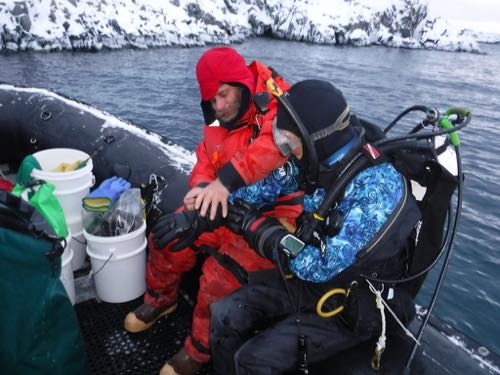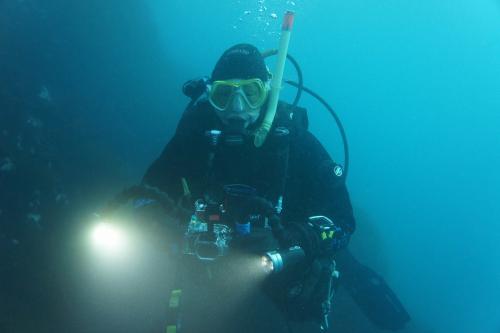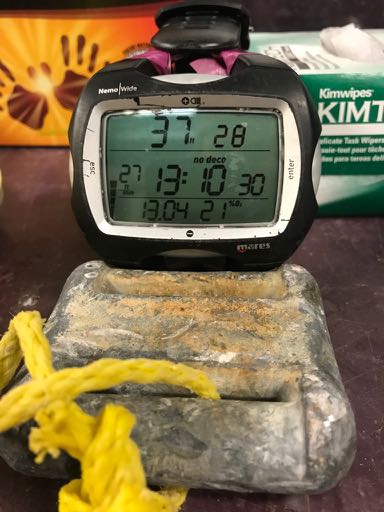How do you make diving safe when the water is below freezing? It takes a lot of coordination and planning to ensure that the divers will have safe trips in the temperatures we experience in Antarctica. Just to be able to dive in Antarctica you must obtain a wide variety of certifications. Drysuit certification is the first step, and then the United States Antarctic Program (USAP(abbreviation) United States Antarctic Program) has a review board that looks at the number of drysuit dives you have had in your lifetime and in the past year. You also need to get letter of support from a diving safety coordinator at your school. Drysuits are usually made of tri-laminate plastic or neoprene, and as their name suggests, do not allow any water to get into the suit.

Below the suit you can wear any type of clothing that will keep you insulated in water that is below freezing. Your head cannot be kept completely dry, so each diver uses some sort of neoprene head covering and a mask, but there is always a bit of skin showing and your lips are exposed to the very cold water. The divers assure me that it’s only painful for a minute or two while you are waiting for your lips to go numb. Gloves are another important area where water can easily leak into the suit, so the rubber gloves that go over the suit are locked in place by a rubber “O” ring.

To keep the suit as far away from the skin as possible and to add a bit of insulation, the suit is filled with air from the air tanks, but this needs to be highly regulated, because the deeper you go the more the air compresses. Andrew describes it as like being choked by your suit, and as you rise some of that air needs to be released through a dump valve as it expands or it will shoot you towards the surface, much faster than is safe for the diver.

The divers use 80 or 110-liter tanks filled to 2400-psi. The amount of air you use each dive differs with the depth you’re diving and how much you are exerting yourself while diving. At a 100ft down you can use 50psi a minute, which means that the air in the tank would be used up in approximately 48 minutes. Even though that is an extreme example, you always have to be aware of the amount of air you are using on your dive. Each diver wears a computer on their wrist, which gives them time at depth, how long you can stay at depth without risk of having to take a decompression stop on the way up, and water temp. There are also alarms on the device that warns if you have been at depth too long or are rising to the surface too fast.

Although the divers never stay at depth longer than their no decompression time, they always take a safety stop on the way up at any depth between 10-20 feet. This allows the divers to make sure that they are expelling nitrogen from their tissues and this helps to protect against getting the “bends”.


Comments